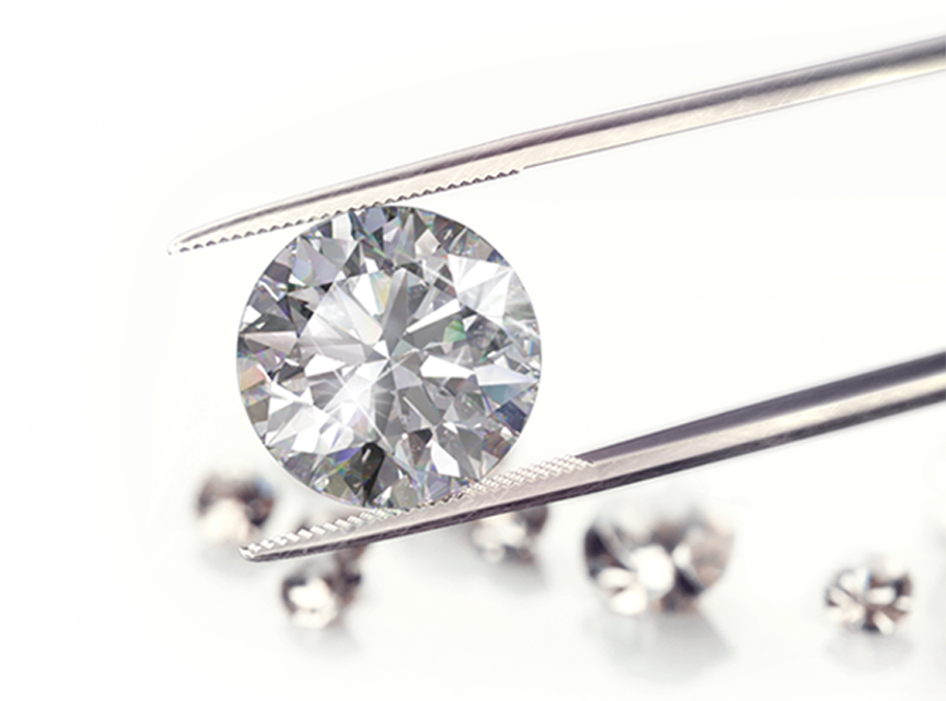The cut of your diamond can easily be the most important of its 4Cs - so paying close attention to this characteristic is more than justified.
Diamond Cut refers not only to a stone’s cut and polish but also to its depth and symmetry. While Diamond Cut does not describe a diamond’s shape, it does evaluate how well-proportioned the stone is.
A diamond’s brilliance and overall appearance are directly impacted by its Cut. A quality cut gives a diamond great luminosity, as it allows the stone to reflect light well. The opposite is also true - a diamond of inferior cut appears dull rather than brilliant.
So, Diamond Cut has a great effect on both the beauty and the value of any diamond.
How Is a Diamond’s Cut Evaluated?
A diamond’s cut is judged based on the following characteristics of its appearance:
- Brilliance. This quality measures how well a diamond reflects white light. A poorly cut diamond appears dull rather than brilliant.
- Fire. The coloured light a diamond reflects is referred to as its fire. A quality-cut diamond will always display not only abundant brilliance but also some fire reflected from its table and facets.
- Scintillation. This term describes flashes of sparkle that appear as a result of light scattering between light and dark areas of a diamond’s surface. Diamonds with higher scintillation have more aesthetic appeal and a higher value.
How Does the GIA Grade Diamond Cut?
Professional gemologists at the GIA (Gemological Institute of America) examine each diamond under magnification and assign the following GIA Cut Grades as a result:
| Excellent |
Highest level of brilliance and fire. Nearly all incoming light is reflected through the table, giving the diamond an excellent sparkle. |
| Very Good |
Exceptional fire and brilliance, a large majority of the incoming light reflected. Very similar to Excellent Cut Diamonds when viewed with a naked eye. |
| Good |
Significant brilliance and sparkle, much of the light reflected through the diamond’s table. Good Cut Diamonds offer beauty at a lower price. |
| Fair |
Little brilliance, as light is not reflected well through the table, rather escaping through the bottom and the sides of the stone. Can be used for smaller carat stones or side stones. |
| Poor |
Nearly no sparkle, brilliance, or fire can be detected. The incoming light escapes through the bottom and the sides of the diamond. |
How Does Diamond Cut Affect Price?
A diamond’s Cut has a significant effect on its price - primarily because the quality and precision of the cut greatly impact the beauty of the stone.
A superior Cut is all about proportions and symmetry. If a diamond is cut with high precision, its facets (flat surfaces) are proportional - along with its table, depth, and a few other important characteristics. As a result, a quality cut diamond reflects the light back to the eye in a spectacular fashion.
The beauty, fire, and brilliance that comes with an Excellent Cut diamond results in a higher price. That is why, if you need to stay within a budget, it is usually better to go for a higher GIA Cut grade - even if it means that you need to compromise a bit on Colour or Clarity.
Which Factors Affect Diamond Cut?
A diamond’s brilliance, fire, and sparkle greatly depend on the following characteristics:
- Proportions. The ratios between a diamond’s table, width, and depth are its key proportions that determine both its appearance and GIA Cut grading. These proportions are so important because they determine how well a diamond reflects light.
For example, if the diamond’s table is too large in relation to its width, the light won’t be reflected well off all of the angles and facets of the diamond’s crown. And, if the diamond’s table is not large enough - then the light will just get trapped inside the diamond instead of being reflected back to your eyes. In both cases, a disproportionate table significantly detracts from the overall beauty of a diamond.
A diamond’s depth and width affect the quality of a diamond’s cut similarly. The depth directly affects the angle of the entering light, so it is crucial that the cut is not too deep or too shallow. A diamond’s width in proportion to its length is also very important and has to be consistent with the diamond’s shape. - Facets Symmetry. A diamond’s facets - its multiple flat glossy surfaces - act as mirrors that reflect the entering light back to the eye. The number, symmetry, size, and position of the facets all impact a diamond’s ability to reflect light.
- Polish. This term refers to the quality of a diamond’s facet surfaces. A well polished diamond creates a clear mirror that is able to reflect the incoming light very well.
How to Choose the Best Diamond Cut (For a Reasonable Price)?
As a rule of thumb, if you are buying a GIA certified diamond, it’s always best to choose an Excellent Cut one - even if it means getting a bit smaller stone. A well cut diamond easily wins over a larger but poorly cut one in terms of overall appearance.
Excellent Cut diamonds are well proportioned and have optimally cut facet angles. As a result, such diamonds reflect light well through their table, displaying abundant brilliance and fire.




































